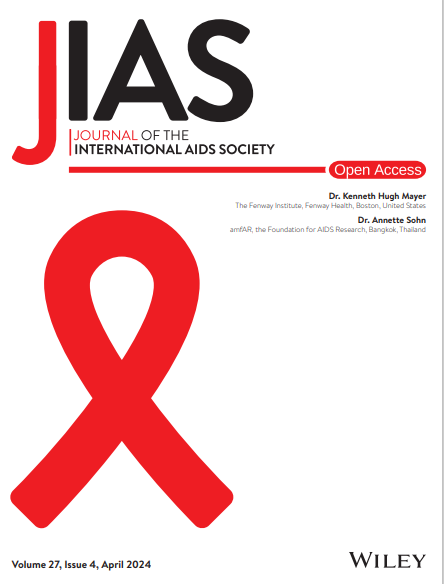Mother-child dyads living with HIV in the Western Cape, South Africa: Undetectable = Undetectable?
Abstract
Introduction
Globally, children living with HIV continue to lag behind UNAIDS targets for viral suppression (VS). Because studies with linked mother-child data are limited, we describe VS and associated factors among young children in a setting with early infant HIV testing (at birth, age 10 weeks and 6 months) and early protease inhibitor-based first-line antiretroviral therapy (ART).
Methods
We analysed routinely collected mother-child data for children living with HIV born 2018–2022 in Western Cape province, South Africa (followed through mid-2023). We assessed associations between child and maternal viral load (VL) results at 12 and 24 months after child ART start using logistic regression, adjusted for child sex, birthyear, severity of child immunodeficiency at ART start, maternal age and timing of maternal HIV diagnosis.
Results
Among 2219 children living with HIV; 30% were diagnosed at birth (≤7 days), 41% before age 1 year (8−365 days) and 29% at age >1 year. Overall, 5% (n = 112/2219) of children died, a third of whom had not started ART; 90% of children (n = 1990) started ART, at median age 5 months (IQR 1–16). Median follow-up from ART start was 26 months (IQR 14–40). Among children with available VL at 12 months (n = 853/1582), 24 months (n = 614/1129) and 36 months (n = 350/658) after ART start, 36%, 43% and 48% were virally suppressed, respectively (VL<100 copies/ml). VS among children at 12 and 24 months was more likely if maternal VL was <100 versus ≥100 copies/ml at 12 months (adjusted odds ratio [aOR] = 3.5; 95% CI 1.9−6.5) and 24 months (aOR = 6.1; 95% CI 2.8−13.1) after child ART start. Children with no/mild versus advanced/severe immunodeficiency at ART start were more likely to achieve VS at 12 months (aOR = 2.3; 95% CI 1.3−4.2) but not at 24 months. Eligible children with missing VL at 24 months (39%) were more likely to have gaps in care of >6 months than those with VL≥100 or VL<100 copies/ml (84% vs. 28% vs. 14%, respectively; p<0.001).
Conclusions
Less than half of children on ART achieved VS, and children were more likely to achieve VS if their mothers were also virally suppressed. Significant efforts are needed to support mother-child dyads to achieve optimal VS.


 求助内容:
求助内容: 应助结果提醒方式:
应助结果提醒方式:


